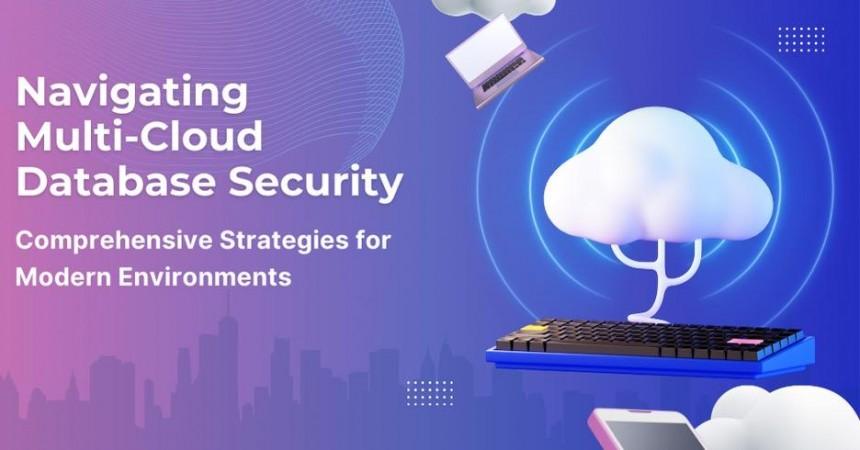
In today's digital landscape, organizations are increasingly adopting multi-cloud strategies to leverage the unique strengths of various cloud service providers. Sachin Gupta, an expert in cloud security, explores the complexities and innovations involved in securing multi-cloud database environments, addressing critical areas such as authentication, encryption, access control, and continuous monitoring.
The Rise of Multi-Cloud Strategies
The shift towards multi-cloud infrastructure, involving services from different cloud providers, offers flexibility and resilience. However, it also introduces complex security challenges, particularly in managing diverse databases across multiple platforms. These environments expand the attack surface due to varied security protocols and tools. Consequently, organizations must develop robust strategies to protect sensitive data while ensuring compliance with regulatory standards.
Addressing Authentication and Access Control
Authentication and access management are vital in multi-cloud security, as distinct identity systems across cloud service providers (CSPs) can complicate policy enforcement. To address this, organizations should implement multi-factor authentication (MFA) and adopt the principle of least privilege to minimize access. Leveraging identity and access management (IAM) tools like AWS IAM, Azure Active Directory, and Google Cloud IAM can help unify access policies across platforms. Regularly reviewing access controls, rotating keys, and using temporary credentials further strengthen security and reduce risks.
The Role of Encryption in Data Protection
Encryption is essential for protecting data at rest and in transit within multi-cloud environments, requiring strategies that utilize native services like AWS Key Management Service, Azure Key Vault, and Google Cloud Key Management Service for secure key management. It ensures that data at rest remains unreadable without encryption keys, even if accessed by unauthorized parties, while protocols like TLS/SSL secure data in transit across cloud networks. Effective key management practices, such as regular rotation and secure storage, are vital for preventing unauthorized decryption and ensuring compliance with data protection standards.
Enhancing Network Security and Segmentation
Robust network security is crucial for protecting multi-cloud databases. Using Virtual Private Clouds (VPCs) for each CSP creates isolated environments with customizable IP ranges, subnets, and routing. Network segmentation further contains threats by dividing networks into smaller segments. Additionally, firewalls and security groups control traffic flow to ensure only authorized access, while encrypted VPNs or direct connections between cloud platforms secure cross-cloud communication and prevent unauthorized data access.
Continuous Monitoring and Threat Detection
Continuous monitoring is vital for multi-cloud security, offering real-time visibility into threats. Native tools like AWS CloudTrail, Azure Security Center, and Google Cloud Security Command Center track cloud activities, detect anomalies, and alert security teams. Additionally, third-party SIEM solutions provide centralized monitoring across platforms, aggregating data for a comprehensive view and faster threat response, which is essential for promptly addressing vulnerabilities and minimizing security incidents.
Navigating Compliance and Governance Complexities
Managing compliance in a multi-cloud environment requires a strategic approach to navigate varying regulatory standards and data protection laws. Automated compliance checks against benchmarks like the Center for Internet Security (CIS) or National Institute of Standards and Technology (NIST) can identify potential issues across different platforms. Organizations should also implement data residency controls and regularly conduct security assessments to ensure compliance with evolving regulations. Maintaining detailed logs and audit trails across all cloud environments is essential for compliance, forensic analysis, and incident response. Centralized logging solutions that can correlate data from different platforms help organizations achieve greater visibility and meet regulatory requirements.
In conclusion, Sachin Gupta emphasizes that as multi-cloud strategies become increasingly popular, securing databases across diverse cloud platforms is more crucial than ever. Implementing a comprehensive security framework that includes robust authentication, encryption, network segmentation, and continuous monitoring can significantly enhance an organization's ability to protect its valuable data assets. By adopting these innovations, organizations can mitigate risks and leverage the full potential of their cloud investments while navigating the complexities of modern digital landscapes.









!['Had denied Housefull franchise as they wanted me to wear a bikini': Tia Bajpai on turning down bold scripts [Exclusive]](https://data1.ibtimes.co.in/en/full/806605/had-denied-housefull-franchise-they-wanted-me-wear-bikini-tia-bajpai-turning-down-bold.png?w=220&h=138)



